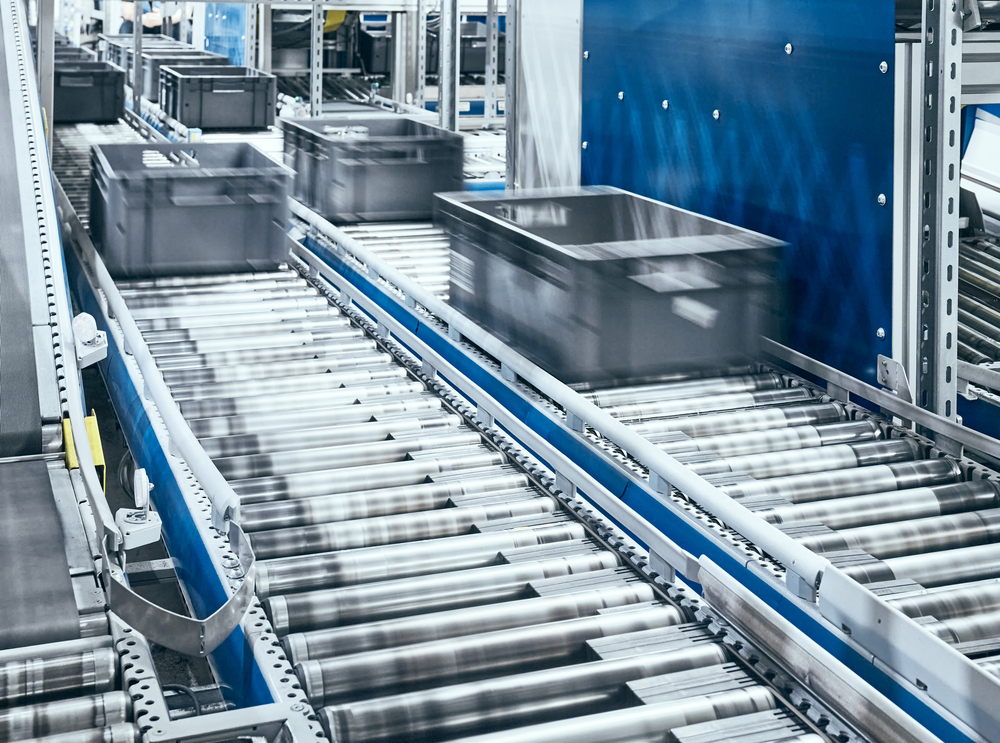Discover the best order picking technologies that can transform your warehouse operations. From RF handheld devices to automated systems, find the right solutions to enhance efficiency and accuracy in your distribution process.
Imagine this: You’re standing in the middle of your bustling warehouse, watching as workers scurry around with clipboards and paper pick lists. Despite their best efforts, errors are creeping in, and orders are going out slower than you’d like. Customers are growing impatient, and you’re feeling the pressure to improve efficiency and accuracy.
What if there was a way to streamline your order picking process, reduce errors, and speed up fulfillment? The solution lies in choosing the right order picking technology for your warehouse.
In this guide, we’ll explore the various order picking technologies available, highlight top solutions and providers, and help you determine the best fit for your distribution warehouse. By understanding these technologies, you can significantly enhance your warehouse operations, leading to better customer satisfaction and increased profitability.
Overview of Order Picking Technologies
Order picking is the cornerstone of warehouse operations, directly impacting efficiency, accuracy, and customer satisfaction. Different technologies can significantly enhance this process, each offering unique benefits and suited to various operational needs.
Importance of Order Picking
Order picking involves selecting items from storage to fulfill customer orders. It’s a critical process in distribution that affects not only the speed of order fulfillment but also the accuracy and overall customer experience. Efficient order picking ensures that customers receive the correct products promptly, reducing the chances of returns and complaints.
Different Order Picking Methods
- Piece Picking: Workers pick one order at a time. This method is simple and suitable for smaller operations but can be time-consuming for larger warehouses.
- Batch Picking: Workers pick multiple orders simultaneously, which reduces travel time and is efficient for operations with high order volumes.
- Zone Picking: The warehouse is divided into zones, and workers pick items within their assigned zones. This method reduces worker movement and can improve efficiency.
- Wave Picking: Combines elements of batch and zone picking. Orders are picked in waves at scheduled times, allowing for better coordination with shipping schedules and minimizing bottlenecks.
Each method can be enhanced with the right technology, making the order picking process faster and more accurate. Now, let’s cover some of the most common order picking technologies for efficient warehouse processes.
1. Paper-Based Picking
While traditional, paper-based picking involves workers using printed pick lists to gather items. Despite being simple and easy to implement, this method has several drawbacks that make it less efficient compared to modern technologies.
Description and Use Cases
Paper-based picking is straightforward: workers receive printed lists of items to pick, walk through the warehouse to find each item, and check them off the list. This method is typically used in smaller warehouses or operations with limited budgets and low order volumes.
Pros and Cons
- Pros:
- Low Cost: There is minimal investment required for implementation.
- Ease of Implementation: No need for advanced technology or extensive training; workers can start using this method immediately.
- Cons:
- High Error Rates: Manual processes are prone to human errors, leading to incorrect picks and increased returns.
- Slower Process: Workers spend more time locating items and verifying picks manually.
- Difficult to Scale: As order volumes increase, the inefficiencies of paper-based picking become more apparent.
Challenges in Modern Warehousing
In today’s fast-paced distribution environment, the limitations of paper-based picking can hinder overall warehouse performance. High error rates can lead to customer dissatisfaction, and the slower picking process can delay order fulfillment, making it challenging to meet customer expectations. Additionally, scaling operations with paper-based systems can be problematic as it requires more labor and time.
Read more: Guide to Order Picking for Distributors

2. RF Handheld Picking
RF handheld devices, such as those provided by Zebra Technologies, are a significant upgrade from paper-based systems. These devices use radio frequency (RF) technology to guide workers through the picking process, providing real-time updates and reducing errors.
How RF Handheld Devices Work
Workers use handheld scanners to read barcodes on items. In some advanced setups, RFID tags may also be used. These devices communicate with the warehouse management system (WMS) to provide real-time instructions on what to pick, where to find it, and where to place it. The system updates inventory levels automatically, ensuring accurate records.
Pros and Cons
- Pros:
- Improved Accuracy: Scanners reduce the chances of human error by verifying each pick against the order in the WMS.
- Increased Efficiency: Real-time updates streamline the picking process, reducing the time spent searching for items.
- Enhanced Inventory Management: Automatic updates to the WMS ensure that inventory levels are always accurate, helping prevent stockouts and overstock situations.
- Cons:
- Initial Investment: Requires purchasing handheld devices and integrating them with the WMS.
- Training Required: Workers need to be trained on using the new devices and system.
Example Solution Provider: Zebra Technologies
- Key Features:
- Durable Handheld Devices: Designed to withstand the rigors of warehouse environments.
- User-Friendly Interface: Easy for workers to learn and use, reducing training time.
- Advanced Connectivity: Real-time communication with the WMS ensures up-to-date information.
3. Voice Picking Systems
Voice picking systems use voice commands to direct workers, allowing for hands-free operation. This method is particularly useful in high-volume environments where efficiency and accuracy are paramount.
How Voice Picking Systems Work
Workers wear headsets connected to a voice picking system, which communicates with the warehouse management system (WMS). The system provides voice instructions to the workers, guiding them through the picking process. Workers confirm their actions using voice commands, which are then recorded in the WMS.
Pros and Cons
- Pros:
- Hands-Free Operation: Allows workers to pick items without needing to handle paper lists or devices, increasing efficiency.
- Increased Speed: Voice commands streamline the picking process, reducing the time spent locating and picking items.
- Higher Accuracy: Real-time feedback and confirmations help reduce errors.
- Cons:
- Initial Investment: Requires purchasing headsets and integrating the voice system with the WMS.
- Training Required: Workers need to be trained on using the voice picking system.
Example Solution: Honeywell Voice (formerly Vocollect Voice)
- Key Features:
- Real-Time Voice Instructions: Provides clear, real-time voice instructions to workers, enhancing efficiency.
- Integration Capabilities: Seamlessly integrates with existing WMS for real-time updates and inventory management.
- Durable and Comfortable Headsets: Designed for prolonged use in warehouse environments.

4. Hands-Free Scan Picking
Hands-free scanning systems, such as ProCat PickRight, enable workers to pick items without handling scanning devices, enhancing efficiency and ergonomics.
How Hands-Free Scan Picking Works
Workers use wearable scanners, such as those worn on the wrist or finger, to scan items as they pick them. These scanners communicate with the warehouse management system (WMS) to provide real-time updates and verify the accuracy of each pick.
Pros and Cons
- Pros:
- Increased Efficiency: Hands-free operation allows workers to pick items more quickly and with less effort.
- Ergonomic Benefits: Reduces physical strain by eliminating the need to handle scanning devices.
- Reduced Pick Times: Streamlines the picking process, leading to faster order fulfillment.
- Cons:
- Higher Initial Cost: Requires investment in wearable scanning devices and integration with the WMS.
- Worker Adaptation: Workers may need time to adapt to using wearable technology.
Example Solution: ProCat PickRight
- Key Features:
- Wearable Scanners: Designed for hands-free operation, improving efficiency and ergonomics.
- Real-Time Updates: Provides real-time data to the WMS, ensuring accurate inventory management.
- User-Friendly Interface: Easy for workers to learn and use, reducing training time.
5. Pick-to-Light and Put-to-Light Systems
Pick-to-light and put-to-light systems use lights to indicate picking locations, reducing search time and improving accuracy.
How Pick-to-Light and Put-to-Light Systems Work
In pick-to-light systems, lights are installed on storage locations. When an order is received, the lights indicate the items to be picked and their quantities. Workers follow the lights to pick the correct items. Put-to-light systems work similarly but are used for sorting items into specific orders.
Pros and Cons
- Pros:
- High Accuracy: Lights guide workers directly to the picking locations, reducing errors.
- Reduced Search Time: Lights help workers quickly locate items, speeding up the picking process.
- Easy to Use: Simple and intuitive, requiring minimal training.
- Cons:
- High Implementation Cost: Installing lights and integrating the system with the WMS can be expensive.
- Not Suitable for All Products: Best suited for high-density, high-SKU environments.
Example Solution Provider: Lightning Pick
- Key Features:
- High Visibility Lights: Bright, easily noticeable lights guide workers to the correct locations.
- Flexible Integration: Can be integrated with various WMS for real-time updates and inventory management.
- Proven Efficiency Gains: Used by numerous warehouses to significantly improve picking speed and accuracy.
6. Automated Storage and Retrieval Systems (ASRS)
Automated Storage and Retrieval Systems (ASRS) represent the pinnacle of order picking technology, automating the entire process with the use of robotics and conveyor systems. ASRS is ideal for large-scale operations requiring high efficiency and accuracy.
How ASRS Works
ASRS systems use automated machinery to store and retrieve items from defined storage locations. When an order is placed, the system automatically picks the required items and delivers them to a designated area for packing and shipping. The entire process is controlled by a warehouse management system (WMS), which coordinates the movement of goods.
Pros and Cons
- Pros:
- Maximum Efficiency: Automation significantly reduces the time needed for picking and retrieving items.
- Very High Accuracy: Minimizes human error by automating the picking process.
- Reduced Labor Costs: Decreases the need for manual labor, lowering operational costs.
- Cons:
- Very High Initial Investment: Implementing ASRS requires a significant upfront investment in machinery and integration with the WMS.
- Complex Implementation: Requires careful planning and setup, including potential modifications to the warehouse layout.
- Maintenance Requirements: Ongoing maintenance is necessary to ensure the system operates smoothly.
Example Solution Provider: Conveyco
- Key Features:
- Advanced Robotics: Utilizes cutting-edge robotics to automate the storage and retrieval process.
- Customizable Solutions: Tailors systems to meet the specific needs of different warehouses.
- Integration Capabilities: Seamlessly integrates with existing WMS for real-time data updates and inventory management.
- Implementation Strategies:
- Consultative Approach: Works closely with clients to design and implement systems that optimize their warehouse operations.
- Success Stories: Conveyco has helped numerous large-scale warehouses improve efficiency and accuracy through their ASRS solutions.

Comparison of Technologies
Choosing the right order picking technology depends on various factors, including your warehouse size, order volume, product types, and budget. Here’s a comparison to help you make an informed decision:
| Technology | Key Features | Pros | Cons | Best Use Cases |
|---|---|---|---|---|
| Paper-Based Picking | Printed pick lists | Low cost, easy to implement | High error rates, slower process | Small warehouses, limited budgets |
| RF Handheld Picking | Real-time updates with handheld devices | Improved accuracy, increased efficiency | Initial investment, training required | Medium to large warehouses |
| Voice Picking Systems | Voice commands for hands-free operation | Hands-free, high accuracy | Investment in systems, training | High-volume warehouses |
| Hands-Free Scan Picking | Wearable scanning devices | Increased efficiency, ergonomic | Higher initial cost | Fast-paced environments |
| Pick-to-Light Systems | Light indicators for picking locations | High accuracy, reduced search time | High implementation cost | High SKU counts, rapid order turnover |
| ASRS | Automated robotics and conveyor systems | Maximum efficiency, very high accuracy | Very high initial investment | Very large warehouses, high throughput |
Factors to Consider When Choosing a Technology
Selecting the right order picking technology involves evaluating several key factors to ensure it aligns with your business needs and operational goals.
Business Size and Volume
- Small Businesses: Smaller operations with low order volumes may find paper-based or simple RF handheld picking systems sufficient.
- Medium to Large Businesses: Larger warehouses with high order volumes benefit from more advanced technologies like voice picking, hands-free scanning, and ASRS to handle increased demands efficiently.
Product Type and Variability
- Product Size and Handling Requirements: The nature of your products (size, weight, handling needs) can influence the choice of picking technology. For example, delicate or hazardous items may require more careful handling, making certain technologies more suitable.
- SKU Diversity: Warehouses with a very high number of SKUs benefit from technologies like pick-to-light or ASRS that streamline the picking process and reduce errors.
Warehouse Layout and Design
- Optimized Flow: Efficient picking requires an optimized warehouse layout. Technologies like ASRS and pick-to-light systems can be integrated into the warehouse design to minimize travel time and improve flow.
- Space Constraints: Some technologies, like ASRS, may require significant space and infrastructure changes, while others, like RF handheld devices, can be implemented with minimal disruption.
Labor Availability and Skills
- Workforce Skills: The skills and availability of your workforce play a crucial role. Technologies like voice picking and hands-free scanning require training but can enhance productivity once implemented.
- Labor Costs: Consider the cost of labor and potential savings from automating the picking process. Technologies that reduce manual labor can lead to significant long-term cost savings.
Scalability and Future Growth
- Business Expansion: Choose technologies that can scale with your business. As your warehouse operations grow, your order picking system should be able to handle increased volumes without compromising efficiency.
- Technology Upgrades: Consider the potential for upgrading technologies as they evolve. Investing in scalable solutions ensures your warehouse remains competitive.
Cost Considerations and Budget Constraints
- Initial Investment: Assess the initial cost of implementing new technologies, including purchasing equipment and integration with existing systems.
- Return on Investment (ROI): Evaluate the long-term benefits and cost savings of each technology. While some solutions require significant upfront investment, the efficiency gains and labor cost reductions can justify the expense.
- Ongoing Maintenance Costs: Factor in the cost of maintaining and updating the technology over time.
Integration with ERP Systems
Integrating your order picking technologies with ERP (Enterprise Resource Planning) systems can significantly enhance efficiency and accuracy in your warehouse operations. ERP systems help streamline various business processes by integrating different functions into a single system, providing a cohesive and real-time view of your operations.
Importance of Integration
A seamless integration ensures real-time data flow between your order picking technologies and ERP system, which improves inventory management, order accuracy, and customer satisfaction. For instance, when an order is placed, the ERP system can automatically update inventory levels and trigger the picking process, ensuring items are picked and shipped promptly.
Benefits of Seamless Integration
- Real-Time Inventory Updates: Immediate updates to inventory levels reduce the risk of stockouts and overstock situations.
- Reduced Manual Data Entry: Automation minimizes the need for manual data entry, reducing errors and freeing up staff for more strategic tasks.
- Enhanced Order Accuracy: Accurate data flow between systems ensures that orders are picked and fulfilled correctly.
- Improved Reporting and Analytics: Integrated systems provide better visibility into operations, enabling more informed decision-making.
Integration Processes
Understanding the basics of integrating different picking technologies with your ERP system is crucial. This includes ensuring software compatibility, data synchronization, and effective communication between systems. Key steps to consider include:
- Assess Compatibility: Ensure that your order picking technologies are compatible with your ERP system.
- Data Synchronization: Set up real-time data synchronization to keep inventory levels and order statuses updated.
- Custom Integration Solutions: Consider working with integration specialists to develop custom solutions that meet your specific needs.
Common Challenges
Integration can be complex and may require overcoming challenges such as data compatibility and system downtime. Common challenges include:
- Data Compatibility: Ensure that data formats are compatible between systems or use middleware to facilitate data translation.
- System Downtime: Plan for integration during low-activity periods to minimize disruptions to operations.
- User Training: Provide comprehensive training for staff to ensure they are comfortable with the new integrated system.
Featured ERP Solution: DAC ERP by CDR Software
At CDR Software, we specialize in the convenience store distribution industry, providing features tailored to this sector. Our flagship system, DAC ERP, is designed to streamline and optimize distribution operations, especially for candy, tobacco, snacks and beverages.
- Key Features:
- Real-Time Inventory Management: DAC ERP provides real-time updates on inventory levels, ensuring you always know what’s in stock.
- Seamless Integration with Picking Technologies: Whether you use RF handheld devices, voice picking systems, or automated storage and retrieval systems (ASRS), DAC ERP integrates seamlessly with various order picking technologies.
- Advanced Reporting and Analytics: Gain access to advanced reporting and analytics tools with DAC ERP. Monitor key performance indicators (KPIs) such as pick rate, accuracy rate, and order lead time to identify areas for improvement and make data-driven decisions.
- Scalability for Future Growth: As your business grows, DAC ERP scales with you. Its flexible design accommodates increasing order volumes and expanding operations.
- Enhanced Order Accuracy: DAC ERP minimizes manual data entry and errors by automating key processes.
- Special Features for Convenience Store Distributors: Includes a full suite of reporting, rebate management, and compliance features tailored to the needs of convenience store distributors.

Best Practices for Implementing Order Picking Technology
Implementing best practices can dramatically improve your order picking process. Here are some strategies to consider:
Training and Skill Development
Invest in training programs to ensure your workforce is skilled and efficient. Well-trained employees are more likely to perform tasks accurately and quickly. Consider ongoing training sessions to keep staff updated on new technologies and processes.
- Comprehensive Training Programs: Develop training programs that include both classroom and hands-on sessions. Regularly update training materials to reflect new technologies and processes.
- Ongoing Skill Development: Provide continuous learning opportunities to keep your workforce proficient in the latest technologies and best practices.
Use of Automation and Robotics
Incorporate automation to reduce manual labor and increase accuracy. Technologies like ASRS and conveyor systems can significantly speed up the picking process and reduce errors.
- Automated Systems: Implement automated systems to handle repetitive tasks, allowing workers to focus on more complex activities.
- Robotic Assistance: Use robotics to assist with picking, sorting, and transporting items within the warehouse.
Layout Optimization and Ergonomic Considerations
Design your warehouse layout for optimal flow. Arrange items logically to minimize travel time and reduce worker fatigue through ergonomic practices.
- Optimized Layouts: Design warehouse layouts to minimize travel distances and streamline the picking process.
- Ergonomic Workstations: Ensure workstations are designed to reduce strain and improve worker comfort.
Inventory Management Techniques
Implement effective inventory management techniques to streamline picking. Techniques like ABC analysis (categorizing items based on importance and usage rates) can help prioritize which items to pick first and where to store them.
- ABC Analysis: Prioritize inventory based on usage rates to ensure high-demand items are easily accessible.
- Cycle Counting: Regularly count a portion of your inventory to maintain accuracy and identify discrepancies.
Real-Time Data and Analytics
Use real-time data and analytics to continuously monitor and improve your processes. Track key metrics such as pick rates, accuracy rates, and order lead times to identify areas for improvement.
- KPI Monitoring: Set up dashboards to track key performance indicators in real-time.
- Data-Driven Decisions: Use data analytics to identify bottlenecks and optimize processes.
Reducing Picking Errors
Implement strategies to minimize picking errors, such as double-checking orders and using technology aids like barcode scanners and voice picking systems. Regularly review error rates and address any underlying issues promptly.
- Double-Check Systems: Implement processes to verify order accuracy before shipping.
- Technology Aids: Use barcode scanners and voice picking systems to reduce errors and improve accuracy.
Future Trends in Order Picking Technologies
Stay ahead by understanding emerging trends. The future of order picking is being shaped by new technologies and changing customer demands.
Emerging Technologies and Innovations
Explore new technologies such as AI, machine learning, and advanced robotics. These technologies may soon optimize picking routes, improve accuracy, and increase speed. For example:
- AI and Machine Learning: These technologies will be able to analyze data to predict demand, optimize inventory placement, and suggest efficient picking routes.
- Advanced Robotics: Robots can assist with picking tasks, reducing the need for manual labor and increasing accuracy.
Impact of E-Commerce
Understand how the rise of e-commerce is reshaping order picking processes. E-commerce has led to an increase in small, frequent orders that require quick and accurate fulfillment. This shift has driven the adoption of technologies like:
- Automated Sortation Systems: These systems can quickly sort items for different orders, reducing the time needed for manual sorting.
- Dynamic Picking Systems: Systems that adapt in real-time to changes in order patterns and inventory levels.
Role of AI and Machine Learning
Learn how AI and machine learning can optimize picking routes and improve accuracy. For instance, AI algorithms can analyze picking patterns to suggest the most efficient routes through the warehouse, reducing travel time and increasing productivity.
Sustainability and Green Logistics
Discover the importance of sustainable practices and how to implement them. Customers and businesses are increasingly prioritizing sustainability, leading to the adoption of:
- Eco-Friendly Packaging: Using recyclable or biodegradable packaging materials.
- Energy-Efficient Equipment: Implementing energy-efficient lighting, heating, and machinery in warehouses.
- Green Transportation: Using electric or hybrid vehicles for order deliveries.
Conclusion
Efficient order picking is crucial for maintaining smooth operations and ensuring customer satisfaction. By understanding the various methods, technologies, and best practices, you can optimize your picking processes and stay ahead in the competitive world of distribution. Integrating a robust ERP system like DAC ERP by CDR Software further enhances your capabilities, providing real-time inventory management, seamless technology integration, and advanced analytics to support your growth.
Ready to transform your order picking processes? Contact CDR Software to learn more about how DAC ERP can benefit your business and help you achieve your convenience distribution goals.
FAQ: Order Picking Technology
What is the most cost-effective order picking technology for small warehouses?
For small warehouses with limited budgets, RF handheld picking is a cost-effective option. While it requires an initial investment in handheld devices, it significantly improves accuracy and efficiency compared to paper-based picking, making it a worthwhile investment.
How can I reduce picking errors in my warehouse?
To reduce picking errors, consider implementing technologies such as RF handheld devices, voice picking systems, or pick-to-light systems. These technologies provide real-time instructions and confirmations, which help ensure accuracy. Additionally, regular training and implementing double-check systems can further minimize errors.
What is the difference between pick-to-light and put-to-light systems?
Pick-to-light systems use lights to guide workers to the correct picking locations, reducing search time and errors. Put-to-light systems, on the other hand, are used for sorting items into specific orders. Lights indicate where items should be placed, ensuring accurate and efficient sorting.
How do automated storage and retrieval systems (ASRS) improve efficiency?
ASRS improves efficiency by automating the storage and retrieval process. Robotics and conveyor systems quickly and accurately pick items from storage and deliver them to designated areas for packing and shipping. This reduces the time needed for manual picking and minimizes errors, leading to faster order fulfillment.
What factors should I consider when choosing an order picking technology?
Key factors to consider include:
- Business size and order volume.
- Product types and handling requirements.
- Warehouse layout and design.
- Labor availability and skills.
- Scalability and future growth.
- Budget and cost constraints.
How can integrating order picking technologies with an ERP system benefit my warehouse?
Integrating order picking technologies with an ERP system ensures real-time data flow, improving inventory management and order accuracy. It reduces manual data entry, enhances reporting and analytics, and provides better visibility into operations, enabling more informed decision-making.
Are there specific order picking technologies suited for high-SKU environments?
Yes, several technologies are particularly well-suited for high-SKU environments:
- Pick-to-Light Systems: Use lights to indicate picking locations, reducing search time and increasing accuracy.
- Voice Picking Systems: Provide voice instructions to workers, allowing hands-free operation and improving efficiency and accuracy.
- Automated Storage and Retrieval Systems (ASRS): Automate the storage and retrieval of items, offering high efficiency and accuracy for large volumes of SKUs.
- RF Handheld Picking: Uses handheld scanners to provide real-time updates and instructions, improving accuracy and reducing search times.
What are the training requirements for implementing voice picking systems?
Implementing voice picking systems requires training workers to use the headsets and voice commands. Training typically includes learning how to navigate the voice system, respond to instructions, and confirm picks. While the initial training period may take some time, the benefits of increased efficiency and accuracy make it worthwhile.

